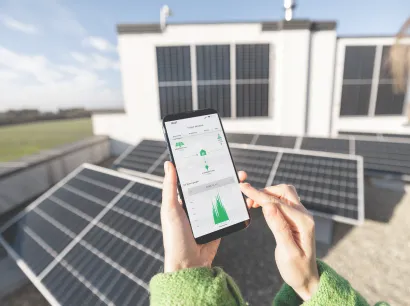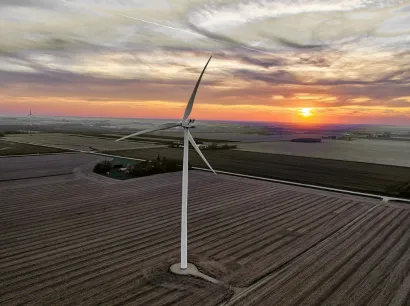Accelerating Your Firm’s Journey To Net Zero
At Fourth Partner Energy, we recognize clean energy transition in the commercial and industrial (C&I) sectors is both a critical challenge and a significant opportunity for climate action. This segment accounts for the largest share of electricity consumption, making it a key contributor of carbon emissions. That’s why we’re dedicated to transforming its energy sources into reliable, round-the-clock clean power.
We don’t just facilitate renewable energy adoption – we guide our C&I clients on their journey to achieving Net Zero.
Key Highlights
Our Portfolio
Operational Capacity
Marquee Clients
Global Presence
Fast-tracking Decarbonisation
FPEL’s Integrated Renewable Energy Solutions
With over 3000 projects executed across distributed solar and open access, FPEL is one of the region’s fastest-growing clean energy developers. We are proud to be the preferred sustainability partner for top corporates across India and Southeast Asia.

On-Site Solar Energy
Rooftop, Ground-Mount and Carport Solutions

Wind Solar Hybrid
Optimising 2 sources of Renewables

Open Access Solar / Wind
Off-Site Clean Energy Solutions

Battery Energy Storage Systems
Step towards Round-the-Clock Renewables

Footprint
FPEL has currently executed wind and solar projects across six of India's top RE-friendly States, catering to industries like ITeS, chemicals, pharmaceuticals, manufacturing, retail, F&B, cement, automotive, engineering and others.
- 563 MW Wind Solar Hybrid Park (ISTS) at Kudligi
- 101 MW Wind Solar Hybrid Park at Nippani
- 75 MWp and 72 MWp Solar Parks at Atharga & Talikoti


Footprint
FPEL has currently executed wind and solar projects across six of India's top RE-friendly States, catering to industries like ITeS, chemicals, pharmaceuticals, manufacturing, retail, F&B, cement, automotive, engineering and others.
- 150 MWp Solar Park at Dhule
- 75 MWp Solar Park at Bodwad
- 28 MWp Solar Park at Katol


Footprint
FPEL has currently executed wind and solar projects across six of India's top RE-friendly States, catering to industries like ITeS, chemicals, pharmaceuticals, manufacturing, retail, F&B, cement, automotive, engineering and others.
- 80 MW Wind Solar Hybrid Park at Ottapidaram
- 21 MWp & 15 MWp Solar Parks at Kovilpatti & Nandikundu


Footprint
FPEL has currently executed wind and solar projects across six of India's top RE-friendly States, catering to industries like ITeS, chemicals, pharmaceuticals, manufacturing, retail, F&B, cement, automotive, engineering and others.
- 105 MWp & 15 MWp Solar Parks at Babina & Shahjahanpur
- 88 MWp Solar Park at Saharanpur


Footprint
FPEL has currently executed wind and solar projects across six of India's top RE-friendly States, catering to industries like ITeS, chemicals, pharmaceuticals, manufacturing, retail, F&B, cement, automotive, engineering and others.
- 70 MW Wind Solar Hybrid Park at Gondal
- 40 MW Wind Solar Hybrid Park at Amreli


Footprint
FPEL has currently executed wind and solar projects across six of India's top RE-friendly States, catering to industries like ITeS, chemicals, pharmaceuticals, manufacturing, retail, F&B, cement, automotive, engineering and others.
- 20 MWp Solar Park at Chakrayapet


Footprint
With over 3000 projects executed across distributed solar and open access, FPEL is one of the region’s fastest-growing clean energy developers. We are proud to be the preferred sustainability partner for top corporates across India and Southeast Asia.
- 563 MW Wind Solar Hybrid Park (ISTS) at Kudligi
- 101 MW Wind Solar Hybrid Park at Nippani
- 75 MWp and 72 MWp Solar Parks at Atharga & Talikoti


Footprint
FPEL has currently executed wind and solar projects across six of India's top RE-friendly States, catering to industries like ITeS, chemicals, pharmaceuticals, manufacturing, retail, F&B, cement, automotive, engineering and others.
- 150 MWp Solar Park at Dhule
- 75 MWp Solar Park at Bodwad
- 28 MWp Solar Park at Katol


Footprint
FPEL has currently executed wind and solar projects across six of India's top RE-friendly States, catering to industries like ITeS, chemicals, pharmaceuticals, manufacturing, retail, F&B, cement, automotive, engineering and others.
- 80 MW Wind Solar Hybrid Park at Ottapidaram
- 21 MWp & 15 MWp Solar Parks at Kovilpatti & Nandikundu


Footprint
FPEL has currently executed wind and solar projects across six of India's top RE-friendly States, catering to industries like ITeS, chemicals, pharmaceuticals, manufacturing, retail, F&B, cement, automotive, engineering and others.
- 105 MWp & 15 MWp Solar Parks at Babina & Shahjahanpur
- 88 MWp Solar Park at Saharanpur


Footprint
FPEL has currently executed wind and solar projects across six of India's top RE-friendly States, catering to industries like ITeS, chemicals, pharmaceuticals, manufacturing, retail, F&B, cement, automotive, engineering and others.
- 70 MW Wind Solar Hybrid Park at Gondal
- 40 MW Wind Solar Hybrid Park at Amreli


Footprint
FPEL has currently executed wind and solar projects across six of India's top RE-friendly States, catering to industries like ITeS, chemicals, pharmaceuticals, manufacturing, retail, F&B, cement, automotive, engineering and others.
- 20 MWp Solar Park at Chakrayapet

FPEL's Marquee Clients


























